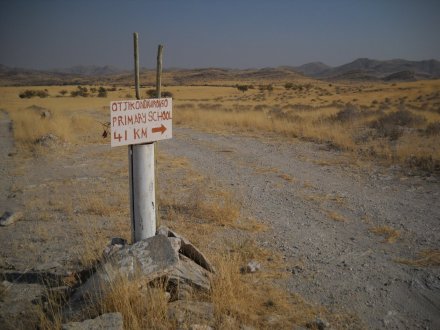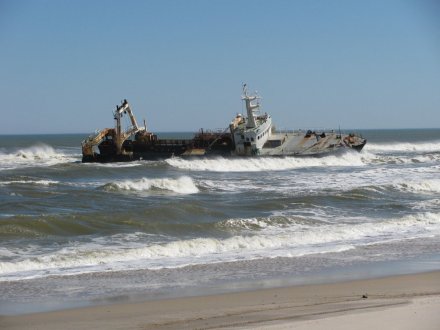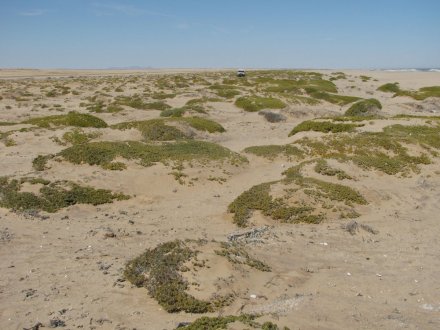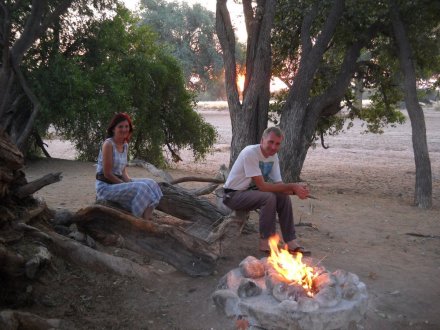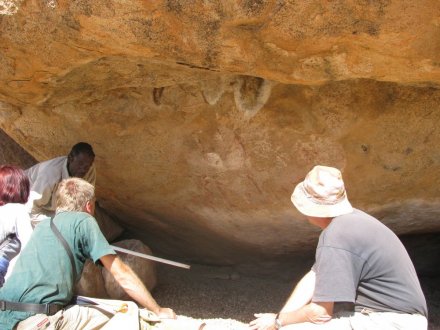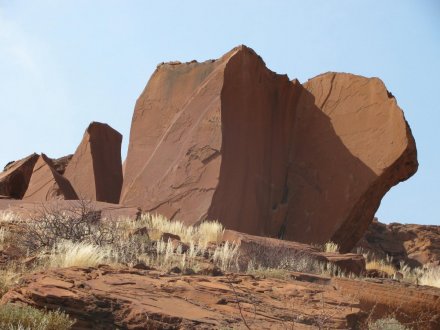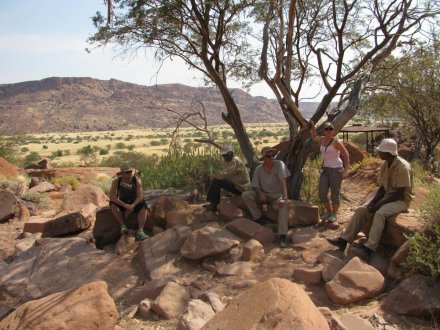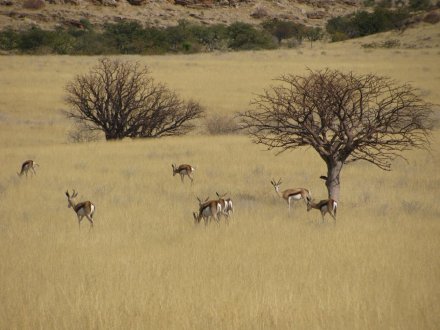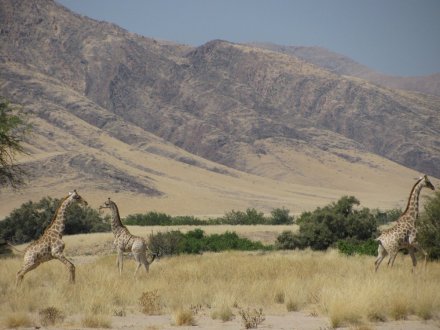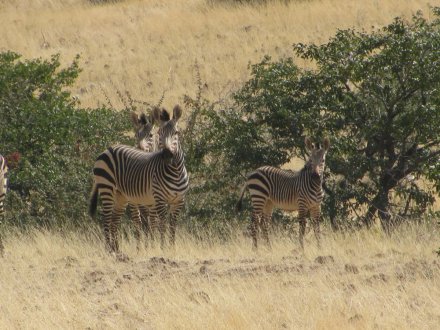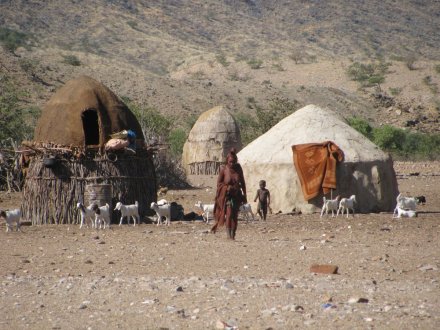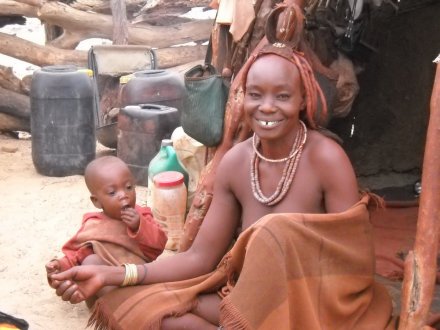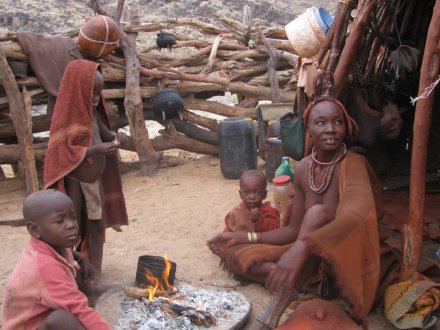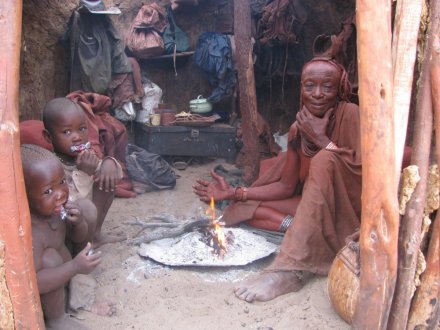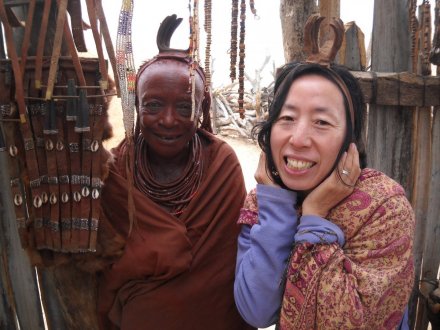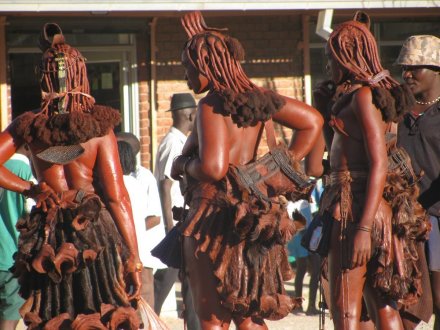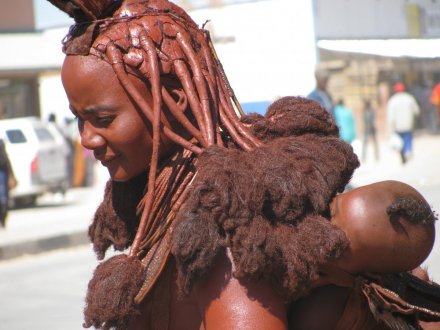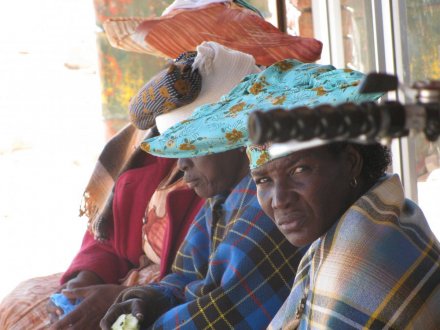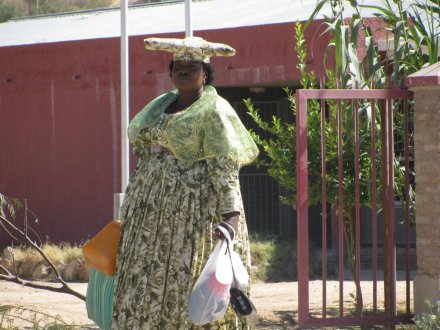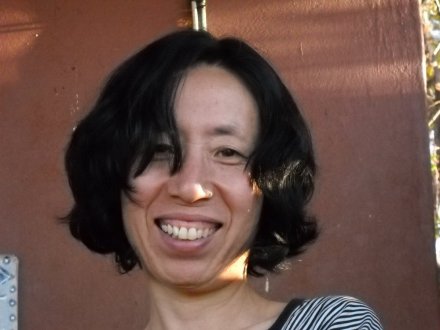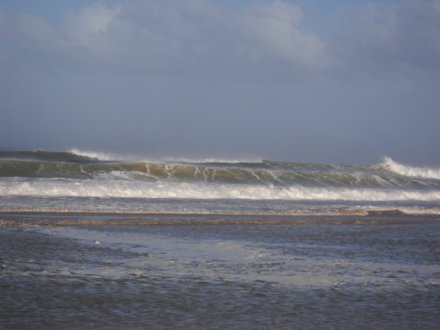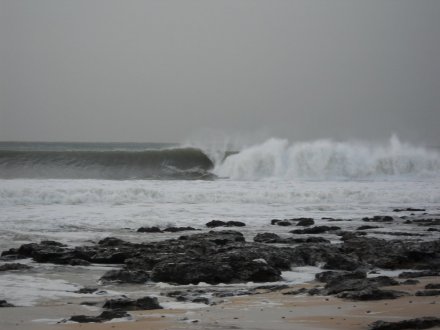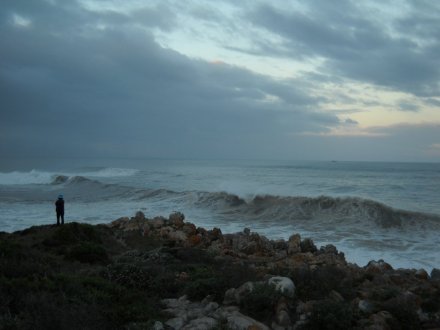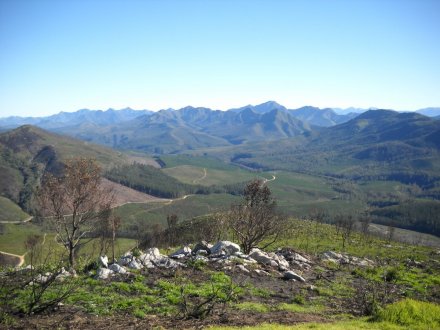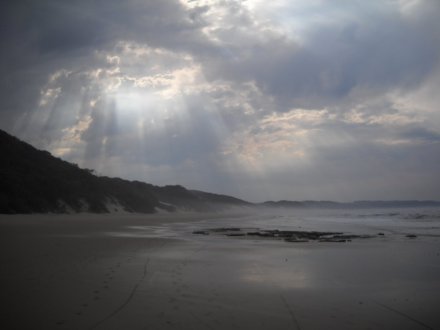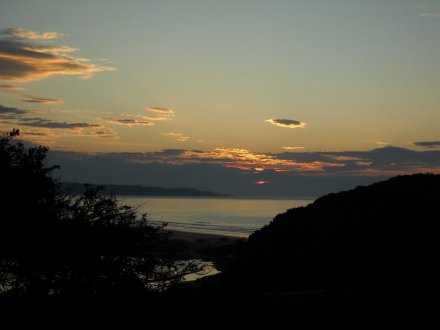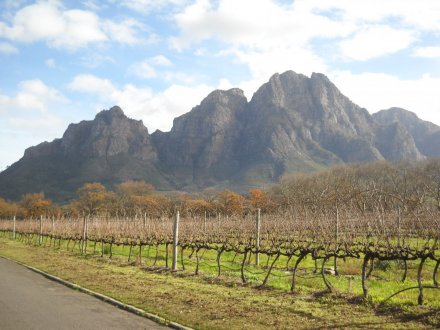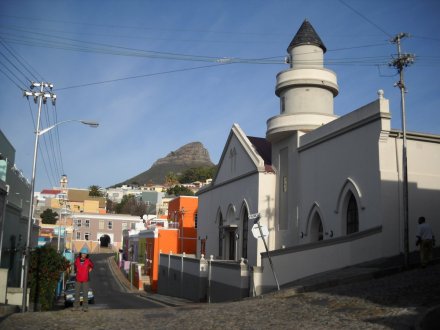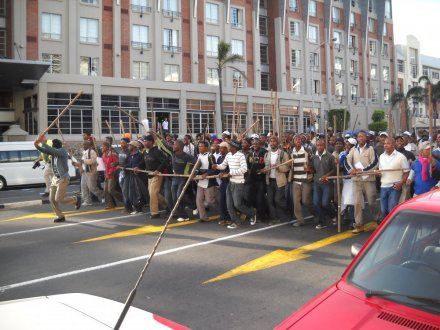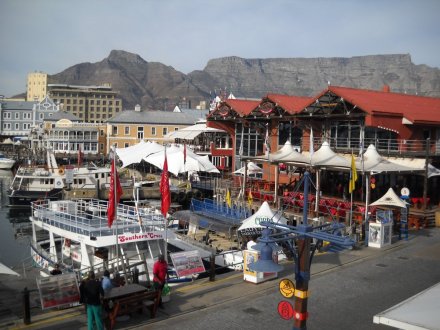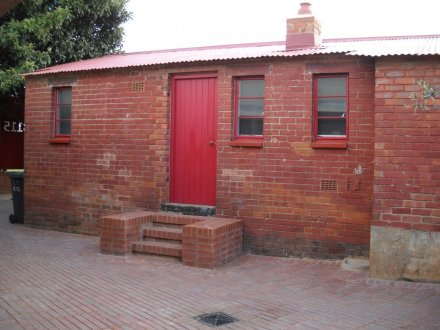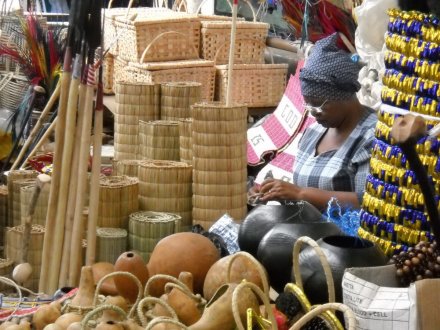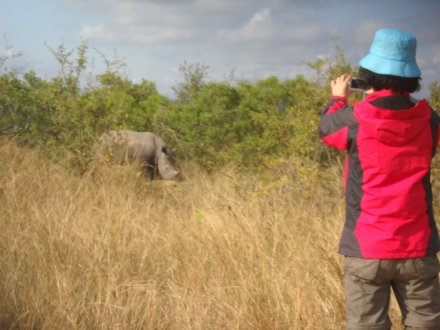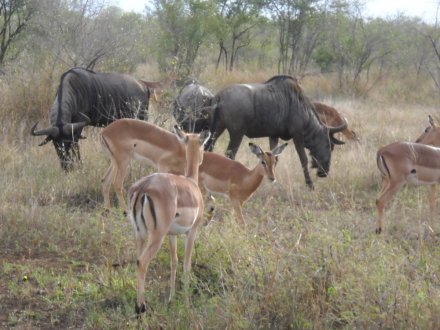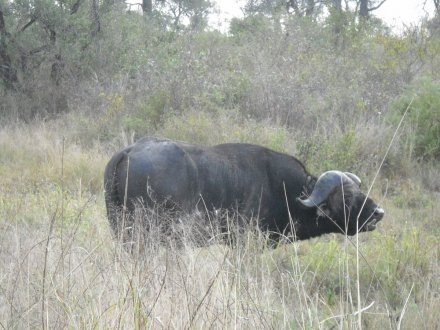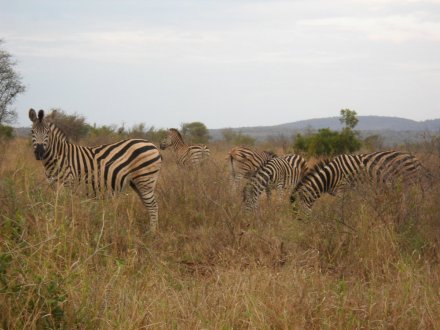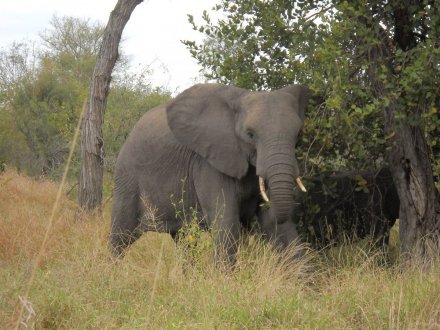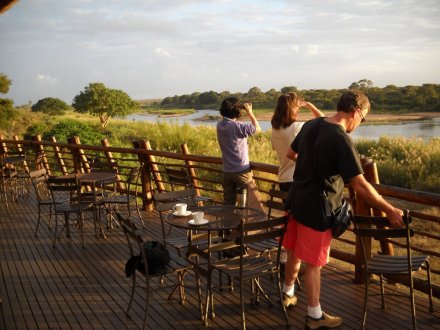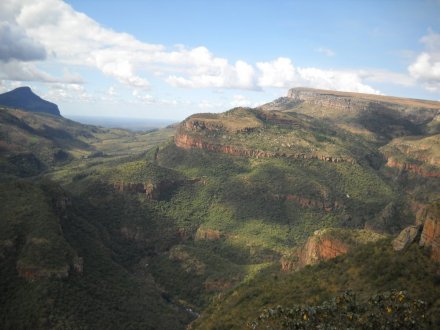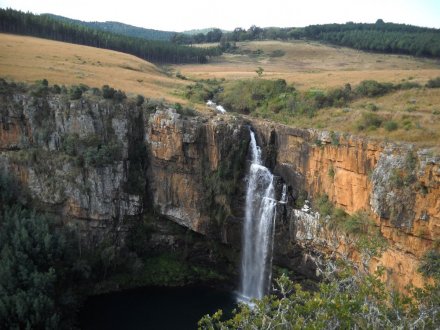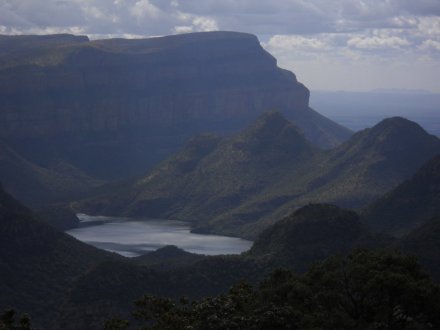Hi everybody.
You could say we got into some deep shit week before last.
This is a typical road situation in a park with rhinos. They like to poop on the road and smish it around. It’s a territorial thing. They are called middens. Wild rhinos are probably gone from Botswana, though they are still unfenced in Namibia, but there are not enough of them to make this kind of clutter.
Speaking of deep shit, we’ve been driving around in Botswana’s Okavango delta. It’s vast swamp, and the road conditions are awful, to say the least. Here are a couple of puddles I drove through.
Sometimes there is a bridge.
Well, after driving through a part of the Okavango from south to north, we were faced with crossing a croc infested river about a meter deep, or being stranded outside the park with no legal way back in. It was going to get dark soon anyway. I chanced it and got stuck out in the middle. The truck stalled and filled with water. Several things drowned to death, like our cell phone (I don’t know, it was lost at sea), one of my cameras and the car stereo. We waded out, but Myung didn’t make it. This is the last photo I have of her. You don’t want to see the close up.
Actually, that’s just some vultures feeding off a cow that was probably struck by a vehicle by the side of a paved highway we were on. There are all kinds of cattle, goats, sheep, donkeys and wild animals all around the roads. You have to look out for them.
Back to the drowned truck story: There was a nearby village. They were bemused as only Africans can be. The English speaking (after a fashion) guy who came out said that people get stuck in there all the time. He got another guy with a truck to back into the water only up to his axles, and we attached my tow line to that. He was able to pull it out the way we came.
I didn’t really know what to do at that point, out in the middle of nowhere Africa. The truck wouldn’t start. Everything, including us, was soaked. It was a few kilometers back to the park entrance. (I guess it wasn’t the middle of nowhere, but it’s not like they have electricity or phones there.) The villager with the truck said he might be able to get it going. It was amazing how quickly he drained the carburetor, blew out the lines as best he could with lung power, and cleaned and dried the distributor and plugs the same way. It wouldn’t start, though. I knew we weren’t going to get out that way, but when my back was turned, he dragged it in reverse while it was in low 4WD, trying to pull start it. That turned out to be a bad idea. Anyway, it still wasn’t going to go, so he towed us back to the park gate and we appealed to the park guy for help. To make a long story short, people around there tried for a couple of days to get it going, to no avail. Too much water had gotten into the engine. New oil, which took a day to arrive, didn’t help. A guy with a truck who does maintenance for the park offered to tow us with a tow bar the 160 km back to Maun, the nearest city with a proper mechanic, for a cool $400. I was in a very weak bargaining position. Besides, Myung and I had been allowed to stay for free in a bush camp run by the park service, but it was time to get out of there.
To make the rest of this story short, Maun is a center of activity in this part of Botswana. They have dealt with this probably a thousand times. We stayed where we had stayed a couple of times before when we were traveling around, while a well respected mechanic went through the procedure step by step. I could have gotten away with the repairs of the cheap, probably, but labor is so cheap here, I got what amounts to an engine overhaul. They had to take off the head, so grinding the slightly rusting at that point valves was done. The dragging start attempts forced water through the cylinders, so I was advised to see if it was “hydraulicked”, that is if the connecting rods were bent (which they weren’t). At that point, since the cylinders had been somewhat scored by sandy water, another hour’s work and the pistons were out. So now it’s been thoroughly drained of water, water contaminated petrol, has new rings, freshly honed cylinders, a rebuilt carb, a new starter, and it runs great.
As I’m writing, they are dealing with clutch damage from the dragging. I’m told it will be done this afternoon. I’m crossing my fingers. I’ll add an addendum when it seems I can get underway.
I’m sticking to water crossings less than two feet deep from now on.
The price tag for all of this? Probably about $1500. I shudder to think how much it would be in the States or for a modern, complicated car with electronic ignition and computer.
Maun is, by far, not the worst place to hang out for a couple of weeks. We have been staying a a lovely riverside backpacker place. If you look one way up the river, there is “the old bridge”.
The other way is scenic, too, especially at sunset.
It shady and cool. There are proper showers and toilets, a restaurant and bar, picnic tables and nice lounge chairs to hang out in and read. We don’t utilize the restaurant/bar much because there is a self service kitchen with a refrigerator and stove. The bar is also a favorite people watering hole for locals, so it’s a little loud at night sometimes, but we are sleeping pretty far from them so it’s not bad.
This delta area is beautiful. We have so many pictures. Myung takes many pictures of flowers, trees, and little animals. It’s too time consuming to upload a vast majority of them. Here’s a sampling, starting with a kingfisher, which are plentiful, with it’s catch. After that is a crocodile. They are also plentiful. Too plentiful almost, if you get stuck in a river with many of them, like we did.
Many hippos.
Here are some general scenes I thought were nice.
On one of our loops from Maun, we went east. There are some salt pans out there which have been drying out during this dry season. In general, the scenery and animals aren’t particularly noteworthy, except for the baobab trees. I didn’t remember what these famous trees looked like, but I don’t think I’ll forget now. They are so individually majestic and interesting. Here are a couple of them.
That about brings you up to speed. From here we are going through Chobe National Park, which should be drier. From there we’ll go see Victoria Falls, which is on the border between Zambia and Zimbabwe. Maybe we’ll go around Zimbabwe for a while, though that’s a hassle because of it’s upheavals. Probably we’ll do that a little, then head up through Zambia. Anything could happen, though.
Addendum: The clutch is fixed: It runs bettr than before. Tomorrow I’m going to rough it up on some bad roads and see if anythig falls off before leaving where the work was done. Then we’ll be out of here.
Be well, all of you.

